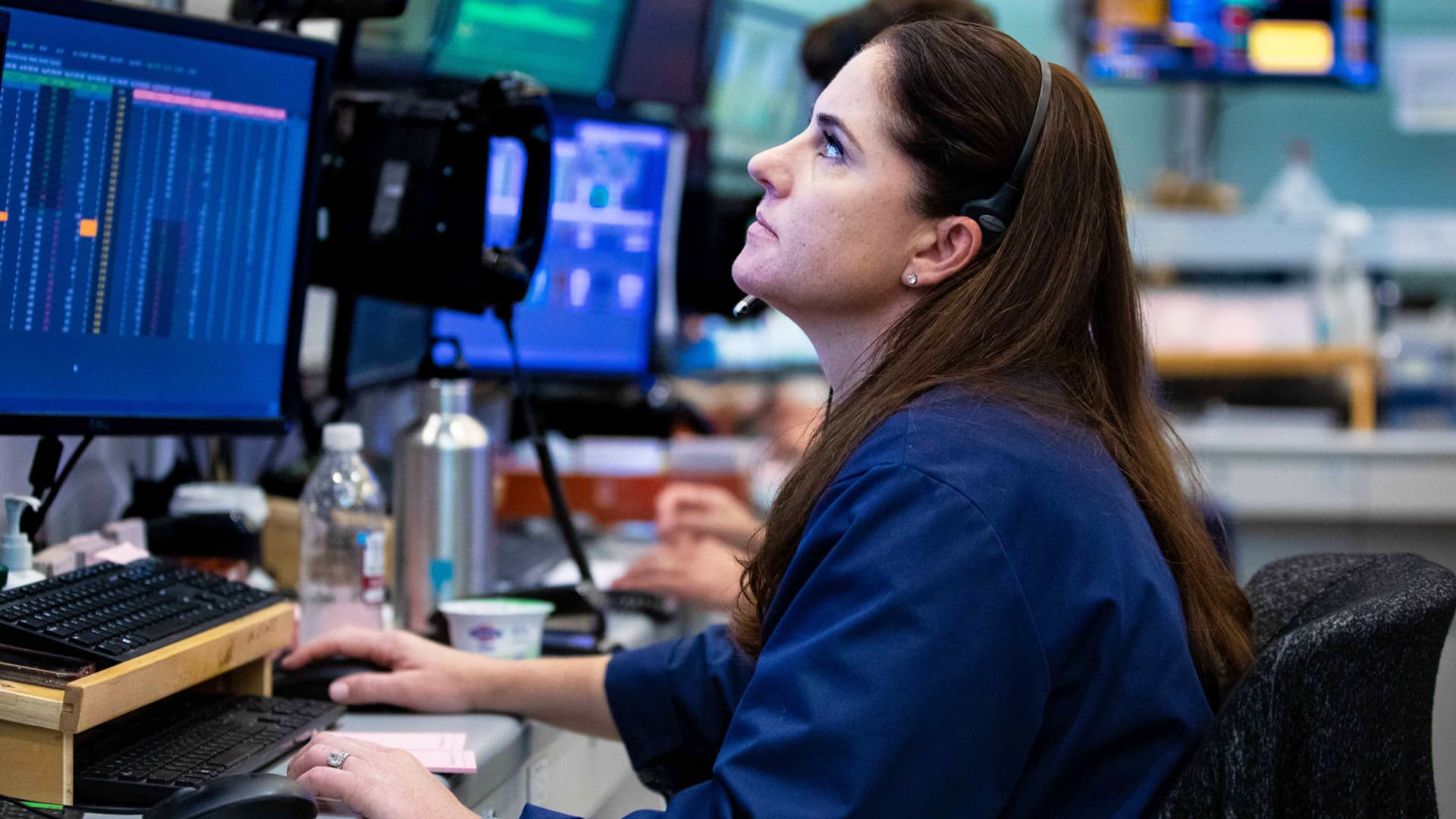
U.S. stocks got off to a bright start in July, as they look to put a nightmarish first half behind them. All three major U.S. indexes recorded winning starts to the second half of the year. The tech heavy Nasdaq Composite has risen in five days straight for the first time this year, while the S & P 500 and blue chip Dow Jones Industrial Average edged down slightly in Friday trading to break a four-day winning streak, but still closed the week higher. This rally has prompted some optimism that the worst of the selloff could be behind us. But Goldman Sachs ‘s Peter Oppenheimer is not convinced. “Typically, in these kinds of bear markets, most equities fall for about 30%. We are not at that level yet, but we are getting towards it,” Oppenheimer, Goldman’s chief global equity strategist and head of macro research, told CNBC “Squawk Box Europe” on Thursday. “Valuations have also come down a long way, but not quite as far as they typically get in these sorts of bear market conditions. I think we are quite a ways through a typical bear market, but not at the lows yet.” How to trade a bear market The tech sector has been one of the hardest hit in this year’s broad market rout, but Oppenheimer believes there remain “great opportunities” in the sector longer term. “Many of the problems that we are going to see over the next decade are going to require technology solutions, including the requirement to improve energy efficiency, substitution of technology for labor, those kinds of things,” he said. “I think companies that can provide answers to those questions and facilitate successful outcomes will do very well over the longer term,” Oppenheimer added He did, however, warn the sector could have further to fall, with current valuations still “quite a bit higher” than long-run averages. More rate hikes also pose further downside risk to tech stocks. Ingredients to end a bear market Oppenheimer believes the interest rate cycle is a critical component of a bear market bottom, noting that peaking interest rates and inflation expectations are key ingredients for a sustainable rebound. “That nearly always happens as economic and profit data continue to decline,” he said, referring to a bear market bottom. “But I don’t think we are there yet.” Oppenheimer noted that the market is pricing in a peak in interest hikes as investors turn their attention to a possible recession. Read more ‘Dividend aristocrats’: Strategists name high-yielding stocks to ride out a bear market How to trade mounting recession risks, according to Goldman Sachs, Wells Fargo and more Asset manager names his top stocks trading at a ‘sizable discount’ right now But he believes this is premature, with the economy likely needing tighter financial conditions before seeing a peak in interest rates. Oppenheimer said that the first-quarter reporting season in the U.S. and Europe came in much stronger than expected, with revenue growth not an issue so far. But he warned that margins will be in focus as the second-quarter earnings season approaches. “Margins have also held up because many companies have been able to pass through higher costs due to high levels of household savings and pent-up demand, given the pandemic. But I think as we progress into the next cycle, investors are going to focus much more on margins than revenue growth,” he said. Europe focus On a regional basis, Oppenheimer believes valuations have come down to relatively low levels across most indexes in Europe. “We have multiples of around 10x — that’s below their long run average, not as cheap as they have often been in the worst of the bear markets but we’re getting into a territory where there is value,” he said. He added that European equities have been supported by easing fiscal policies, as well as healthy private sector and household balance sheets. Governments are also intervening to moderate rising energy prices — what Oppenheimer believes to be the “biggest and most negative” shock to consumers. As such, he says European stocks could see a reasonably decent recovery once interest rates come down.
